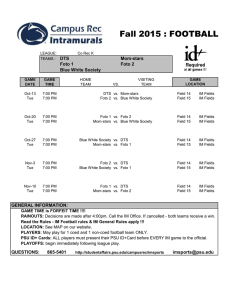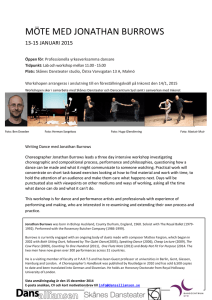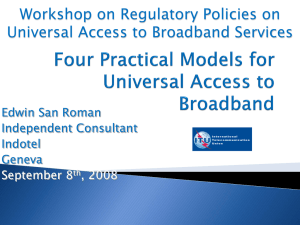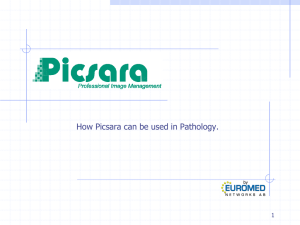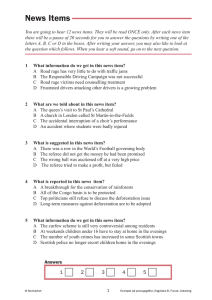DL Hart Memorial Outcomes Research Grant Program Details
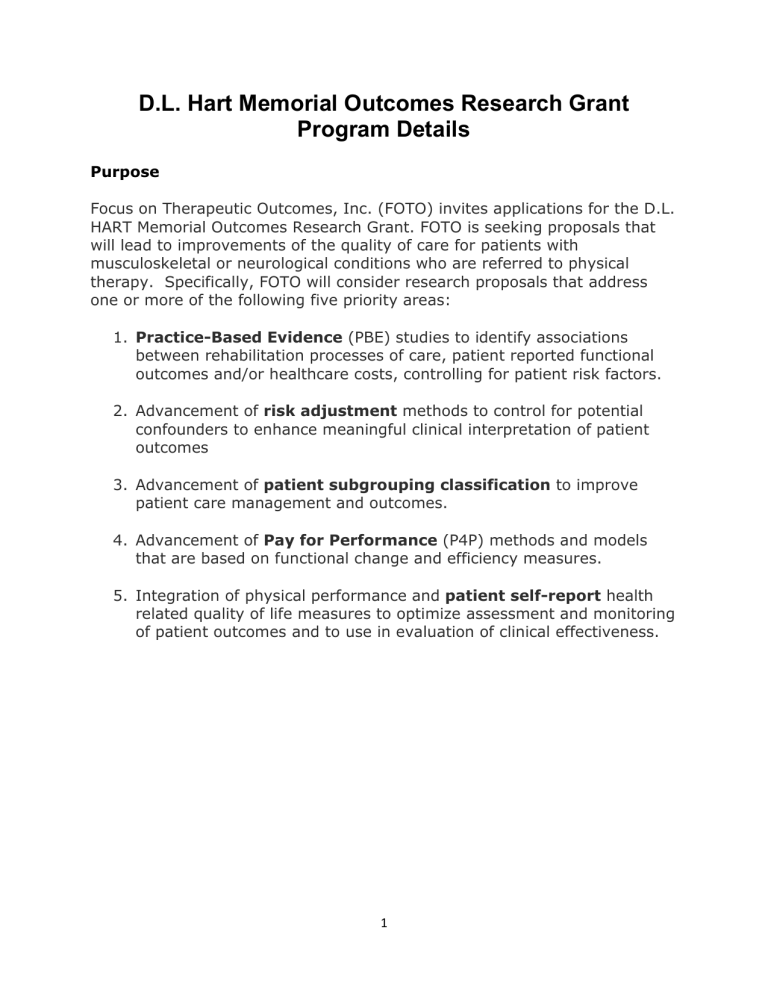
D.L. Hart Memorial Outcomes Research Grant
Program Details
Purpose
Focus on Therapeutic Outcomes, Inc. (FOTO) invites applications for the D.L.
HART Memorial Outcomes Research Grant. FOTO is seeking proposals that will lead to improvements of the quality of care for patients with musculoskeletal or neurological conditions who are referred to physical therapy. Specifically, FOTO will consider research proposals that address one or more of the following five priority areas:
1.
Practice-Based Evidence (PBE) studies to identify associations between rehabilitation processes of care, patient reported functional outcomes and/or healthcare costs, controlling for patient risk factors.
2.
Advancement of risk adjustment methods to control for potential confounders to enhance meaningful clinical interpretation of patient outcomes
3.
Advancement of patient subgrouping classification to improve patient care management and outcomes.
4.
Advancement of Pay for Performance (P4P) methods and models that are based on functional change and efficiency measures.
5.
Integration of physical performance and patient self-report health related quality of life measures to optimize assessment and monitoring of patient outcomes and to use in evaluation of clinical effectiveness.
1
Grant Guidelines
Research Priority Backgrounds
1.
Practice-Based Evidence (PBE) Research Design
Sound rigorous methods are needed by researchers and providers to address practical questions about risks, benefits, and costs of interventions as they occur in routine clinical rehabilitation practice.
Practice-based evidence (PBE) design is a comprehensive observational research approach designed to decrease biases generally associated with traditional observational research. Main features of PBE include (1) exhaustive attention to patient characteristics to address confounders; (2) use of large samples and diverse sources of patients to improve sample representativeness, power, and external validity; (3) inclusion of front-line clinicians in the design and execution of the study to improve ecological validity; and (4) use of detailed standardized documentation of interventions with training and quality control checks for reliability of the measures of the actual process of care.
FOTO is particularly interested in research proposals addressing this priority area that will examine the following general questions: Are treatments used in daily practice associated with intended outcomes? For whom does an intervention work best? With limited clinical resources, what are the best interventions to use for specific types of patients?
Examples of specific research questions considered responsive to this priority include, but are not limited to, the following:
What are the processes of care associated with best self-reported short term functional outcomes for patient treated in outpatient community based rehabilitation settings for one or more of the most prevalent types of musculoskeletal impairments?
What are the referral patterns and processes of care associated with the best self-reported functional outcomes and lowest downstream healthcare costs for patient diagnosed with low back pain?
What are the differences in types and processes of interventions and risk adjusted outcomes for patients treated for cervical impairments in different rehabilitation settings?
2
2.
Risk Adjustment
It is critical to adjust for differences between patients when evaluating quality of care using patient outcomes because differences in patient outcomes are associated with type and severity of impairments, as well as other factors. Without appropriate adjustment for risk factors, outcomes cannot be interpreted in a meaningful manner nor attributed to therapeutic interventions. Risk adjustment for case-mix is particularly important in outcomes research, where treatment groups are self-selected rather than randomized.
Research proposals addressing this priority area should use sufficiently large data sources to examine factors associated with the outcomes of care.
FOTO is particularly interested in novel research to advance and expand on work that has already been conducted in this area.
Examples of research questions considered responsive to this priority include, but are not limited to the following:
What is the relative contribution of patient-related factors, such as socioeconomics, educational level, language, culture, and self-efficacy to comprehensive models predicting discharge functional status after physical therapy treatment?
How do risk factors for functional status vary across types of patient impairments and conditions, and/or settings?
What factors can be used to risk-adjust for service utilization? How do these factors vary across patient impairments, conditions, and/or
settings?
How does risk adjustment impact the evaluation of provider performance?
3.
Patient Subgrouping Classification
Classifying patients with musculoskeletal impairments into homogeneous treatment subgroups to help direct treatment decisions and improve prognosis, patient outcomes and quality of care, as well as reduce healthcare utilization and costs, has been consistently reported to be an important clinical and research priority. For instance, recent studies on low back pain provide growing evidence that treating patients with LBP using a treatment-based classification approach can result in better patient
3
outcomes and less health care costs when compared with interventions that are not classification based.
Additional research is required to examine alternative classification systems that consider psychosocial, socioeconomic, and physical impairment factors, and to compare various established classification paradigms models and treatment approaches.
Examples of research questions considered responsive to this priority include, but are not limited to the following:
What classification systems or parts of classification system suit the majority of patients with spinal impairment managed during everyday clinical practice for the purpose of directing treatment designed to produce the most effective results as efficiently as possible?
What is the relative contribution of incorporating biological, psychological, and social patient-related factors to comprehensive classification models to improve patient outcomes and reduce downstream health care costs?
Are patient outcomes similar when managing patients with musculoskeletal impairments using different treatment-based classification approaches?
4.
Pay for Performance
Given, the emphasis on value-based purchasing in today’s healthcare environment, it is evident that there is great future potential for adoption of pay for performance programs in rehabilitation. There have already been several projects using functional status change during an episode of rehabilitation service in combination with efficiency measures to categorize levels of provider performance and inform reimbursement.
One such project was conducted by Focus On Therapeutic Outcomes (FOTO),
Inc. Dennis Hart developed and simulated the first P4P process for outpatient therapies using retrospective data through a CMS grant (Grant
#18-P-93066/9-01 Hart, PI). The core of the P4P process was a Value-based
Purchasing Payment Algorithm (VPPA) that identified the method of payment for therapy services and realigned financial incentives to high quality care delivered efficiently.
4
Additional research needs to be conducted to build upon this work, examine alternative VPPA models, and compare the validity of various models and approaches.
Examples of research questions considered responsive to this priority include, but are not limited to the following:
What is the validity of P4P models that utilize functional status and efficiency measures? Are these models really able to differentiate value-based care?
What is the impact of risk adjustment on P4P models that categorize provider quality?
What is the impact of implementing P4P programs/quality measurement programs on patient outcomes and service utilization?
5.
Integration of Physical Performance and Patient Self-Report
Outcome Measures
Functional limitations have been defined for studies examining the effectiveness of physical therapy interventions for musculoskeletal impairments in rehabilitation science through measures of patient-reported outcomes (PRO) and physical performance (PPM). There has been increased interest in the assessment of PROs in outpatient physical therapy because such measures can objectively and efficiently capture the patient’s opinion or experience performing a wide variety of functional tasks and can be used to document a change in patient’s functional status during treatment. PPM’s are also used to assess patient outcomes and to objectively document a change in patient’s functional status. PPM require patients to perform specific functional tasks that can be evaluated in a standardized manner using predetermined criteria such as distance, time, exertion, motor control, and/or pain.
Although PRO and PPM are thought to assess similar constructs, additional research is required to examine differences between these 2 modes of measurement, understand the reasons underlying these differences, and to develop tools that integrate findings from both.
5
Examples of research questions considered responsive to this priority include, but are not limited to the following:
Do patients on disability who are experiencing elevated distress with higher medical complexity under-estimate their functional ability (i.e., lower PRO functional scores) compared to actual physical performance (i.e., higher PPM scores)?
Do health problems in elderly patients with musculoskeletal impairments inflate perception or self-report of functional limitations compared to actual physical ability?
Does correlation between PPM and PRO improve in patients without distress or complex medical & disability issues?
Can a clinimetrically sound measure be developed that integrates findings from PPM and PRO?
Priority
1.
Priority will be given to proposals that include the following: a.
Applications that use FOTO data. b.
Functional outcomes assessments c.
Applications that include a physical therapist as coinvestigator. The Principal Investigator does not have to be a physical therapist.
Eligibility
1.
The grant should clearly address 1 or more of the 5 research priority areas described above.
2.
Individuals are encouraged to network with other clinicians and researchers to develop and complete projects at single or multiclinic sites.
3.
Members of FOTO’s Research Advisory Board may apply for a
D.L. Hart Memorial Outcomes Research Grant as PI, or participate as a coauthor or consultant; however that applicant may not participate in the review or selection process.
6
Funding
A maximum of $10,000 can be requested. All correspondence is with the principal investigator (PI). All work must be completed within two years of funding. Proposals will be subjected to a peer-review process and only the highest quality projects will be eligible to receive funding.
Funding Agreement
1.
All applicants receiving an award for a research grant are required to submit annual reports to FOTO.
2.
It is expected that the PI will prepare and submit a manuscript for publication in a peer-reviewed journal within 4 months following project completion. It is also expected that:
a poster or platform presentation will be submitted for consideration at an appropriate national or international conference
the proposal abstract will be published on FOTO website.
3.
If a grant is awarded the funding source should be cited in all publications and presentations resulting from the award.
4.
If the PI fails to submit an annual report or fails to implement the proposed project, the PI will be requested to return all funds distributed to them within 30 days. This policy goes into effect six months past the due date of any delinquent report or the expected starting date of the project.
Grant Timelines
To apply, please complete the required application forms found at www.fotoinc.com and submit all required materials through this website.
Only electronic submissions will be accepted.
1.
A call for proposals will be posted on the FOTO and the APTA
Health Policy and Administration (HPA) websites at www.fotoinc.com and www.aptahpa.org.
2.
To be considered for review, submissions must be received by
January 10th. Late submissions will be returned without review.
7
3.
The PI will receive electronic notification by February 1st for proposals that have adhered to the submission guidelines and have been referred on to the peer-review process.
4.
Award notification will be made by May 15 th .
5.
Earliest project start date is June 1st.
6.
Annual reports are due by May 31 st at the completion of each grant year.
7.
The expectation of the FRAB is that the project will be completed within 2 years from the starting date. All funds are granted at the beginning of the project period.
Review Process
Initial Screening
The initial screening is performed by a member of the FRAB. This initial screen determines if the applicant has fulfilled all requirements detailed in the research program announcement and submission guidelines. Reasons for rejection without further consideration:
Incomplete or late submissions
Submissions that do not adhere to the GRANT APPLICATION
INSTRUCTIONS
Requests for funds for more than $10,000
Projects that are not related to the specific FOTO priority areas outlined in the Program Details.
Peer review process
Step 1. Applicants that have fulfilled all requirements detailed in the research program announcement and submission guidelines will be forwarded to the Peer Review Committee. The FRAB member performing the initial screen will establish the peer review group. The Peer Review
Committee will consist of two members of the FRAB and one member of the
APTA HPA research committee.
8
Reviews will be based on the grant proposal’s scientific merit as follows:
Significance – the extent to which the research project makes an original and important contribution to the body of evidence related to the specific FOTO objectives outlined in the Program
Details.
Research design – the extent to which the conceptual framework, design, methods, and analyses are properly developed, well integrated, and appropriate to the specific aims of the project
Feasibility – the likelihood that the proposed research project can be completed by the PI given his/her experience, expertise, and resources. The institution or clinic sponsoring the project must submit in writing tangible evidence that may ensure the completion of the project. Any consultants must submit letters of agreement.
Budget – the budget must follow application guidelines. The purpose of the budget and justification is to support all expenses required to complete the proposed research project’s specific aims. Only reasonable budgets will be considered. Include only direct costs.
Each proposal will be scored on a scale from 1-9 and interpreted as follows:
Overall Impact or
Criterion Strength
High
High
High
Low
Low
Low
Medium
Medium
Medium 6
7
8
9
1
2
3
4
5
Score Descriptor
Exceptional
Outstanding
Excellent
Very Good
Good
Satisfactory
Fair
Marginal
Poor
Step 2: The members of FRAB will review the findings of the Peer Review
Committee, discuss applications with acceptable scores (Good or above) i.e.,
> 5. The chairperson will then rank order applications by quality score. The full FRAB review will take place during the FRAB annual meeting at the spring FOTO conference. The CEO of FOTO will consider FRAB rankings when making the final funding decision.
9
Step 3: Applicants will be notified of their funding award status within 30 days of the Board meeting or by May15th. Applicants receiving funding must notify FRAB chairperson of acceptance of funds within 14 days. All awarded applicants must provide evidence of project approval by an Ethical
Review Board before funds are dispersed.
Step 4: If applicable, some applications may be funded contingent on successful revision as per FRAB recommendations. If a grant proposal is returned to the applicant after the peer review process with a request for minor revisions, the PI must resubmit 1) a one-page summary of changes suggested by the Peer Review Committee and 2) grant application with all highlighted changes in BOLD print. Only one re-submission will be allowed.
The original review committee members will review the response and revised applications.
Disclaimer
PIs submitting applications do so with the understanding that they will abide by the conditions, deadline policies, and decisions of FOTO. FOTO reserves the right to change the amount of any award at its sole discretion. FOTO makes no guarantee that requested grants will be awarded or that if your proposal is recommended for funding, that you will receive the total amount of funds requested. If there are no acceptable projects for any grant year, no grant monies will be dispensed.
Contact Information
Questions regarding the application process can be directed to the FOTO website at www.fotoinc.com.
10
